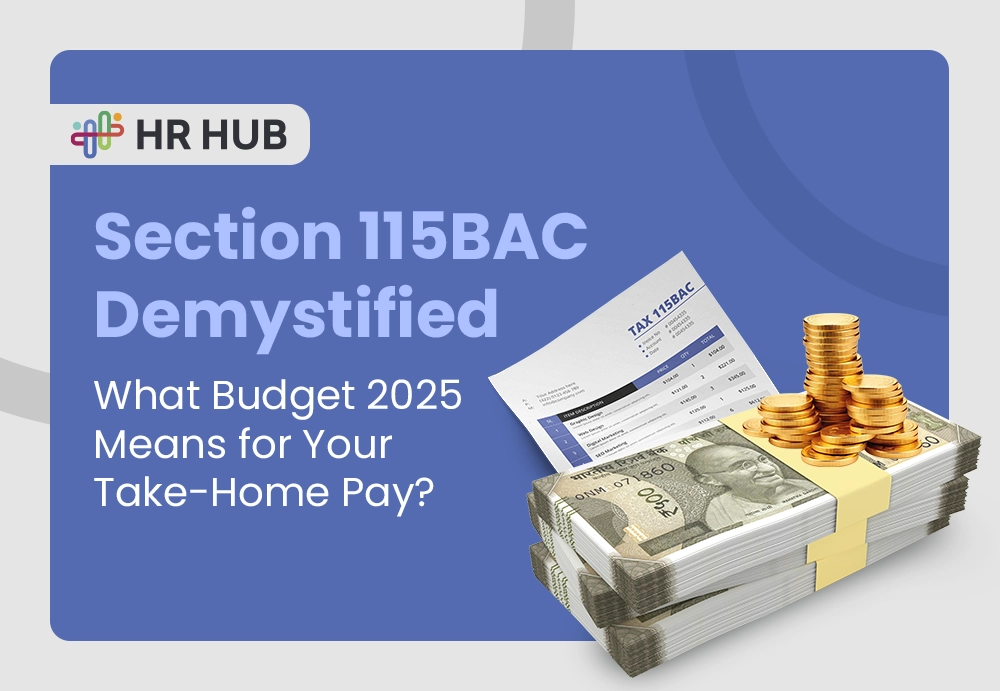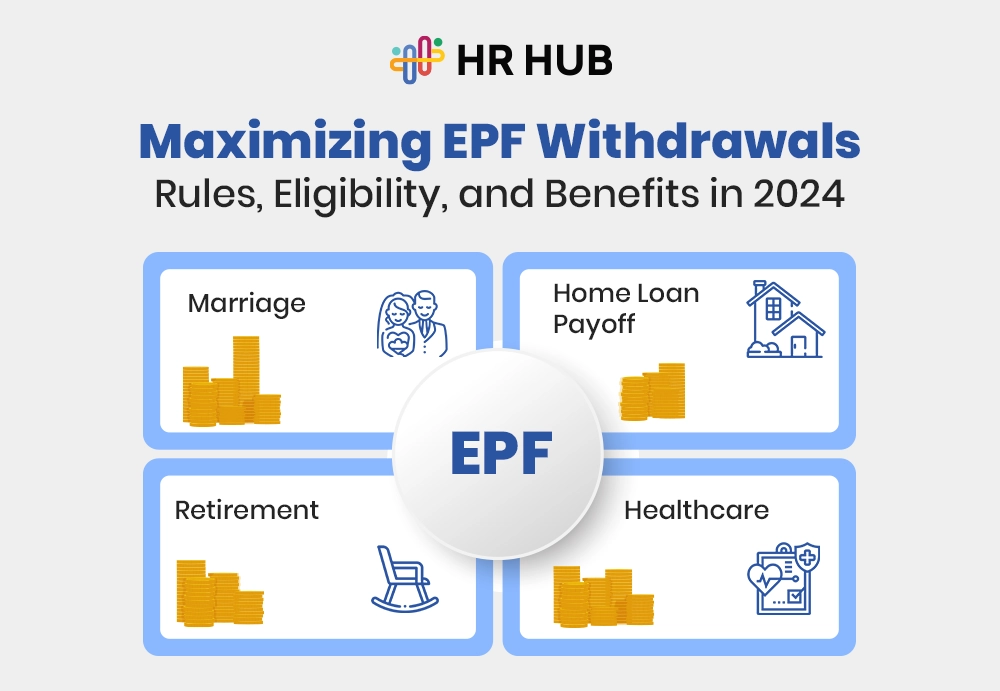Remember when tracking attendance meant paper logs, chaotic registers, and that one pen that always went missing?
Those were simpler times, sure—but not smarter. Back then, employees queued up to scribble their names and times, HR scrambled to decipher handwriting, and payroll ran on prayers and Post-its.
It wasn’t just inefficient—it was risky.
However, like everything else in the modern workplace, attendance management has undergone its transformation. And what a transformation it’s been—from coffee-stained ledgers to cloud-powered dashboards.
So, let’s rewind, fast forward, and pause at the biggest milestones of this fascinating shift.
The ‘Signature Sheet’ Era: Trust-Based or Trust-Broken?
There was once a time when “attendance” literally meant signing your name.
While the idea sounds harmless, the execution wasn’t. People signed in for their friends. Time theft was rampant. Accuracy? Let’s not even go there.
This wasn’t just a flaw in process—it was an accountability gap.
Companies didn’t just lose time—they lost trust.

The Paper Log Era: When Attendance Was Just a Signature
Let’s rewind a bit.
Back in the day, tracking attendance was all about one thing: a physical register.

You walked in, grabbed the pen at the front desk, and wrote your name and time. Simple? Maybe. But here’s what it meant:
- If your handwriting was messy, HR had a tough time decoding it
- If your friend signed in for you, no one noticed
- If HR needed to tally overtime, they had to go page by page.
And yes—“buddy punching” was very much a thing. Entire attendance data could be based on favors and friendships instead of actual presence.
Worse? When payroll time came around, HR teams had to cross-check hundreds of entries. One missed line meant wrong salary processing—and a lot of frustration on both ends.
That system wasn’t just old. It was a black hole of productivity.
The Spreadsheet Revolution: A Step Forward, But Not Quite There
Then came Excel—and it felt like a miracle.
No more paper logs. No more guessing someone’s handwriting. Now, data lived in rows and columns.
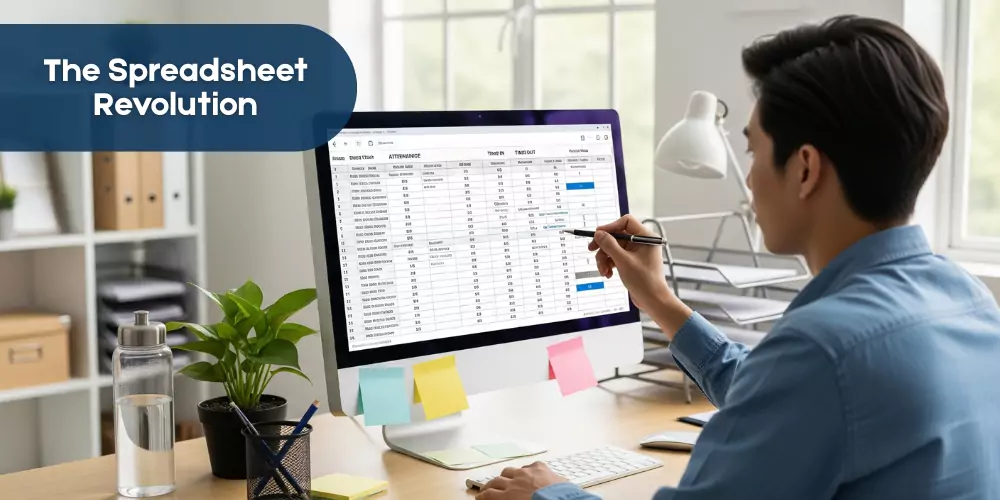
What improved:
- Quick calculation of hours and overtime
- Neat formatting
- Easy month-end summaries
But beneath the surface? The same problems continued—just in a different format.
- Someone still had to enter data manually
- You still had to trust employees to log their time truthfully.
- One wrong formula, and the entire sheet was off.
And here’s the real deal-breaker: no real-time visibility. If someone were absent all week, HR wouldn’t know until they opened the sheet at month-end.
Spreadsheets made things faster—but not smarter. The attendance problem wasn’t fixed. Just...hidden under better formatting.
Biometric Systems: When Technology Took the Front Desk
After spreadsheets came something no one could fake: biometrics.
Fingerprint scanners. Facial recognition. Iris scans.
Suddenly, your attendance wasn’t about what you wrote—it was about who you were.
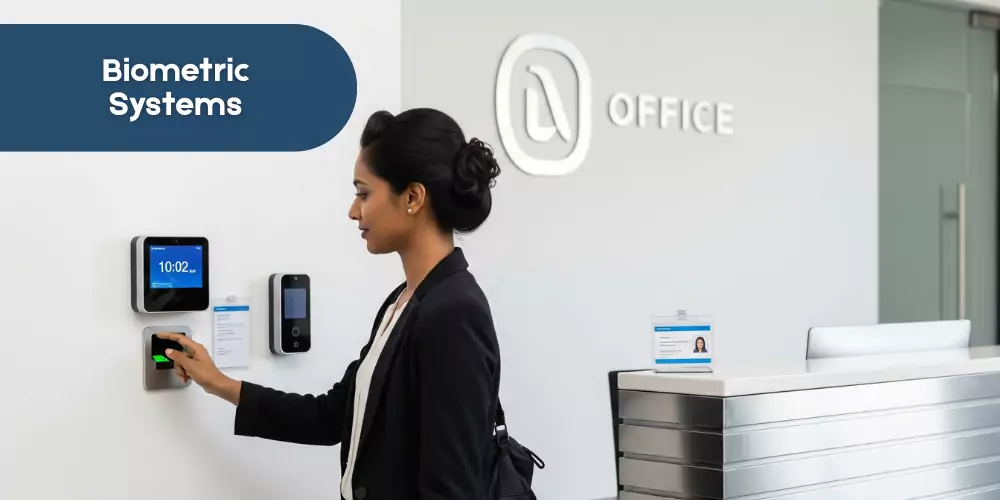
This changed the game for HR:
- No more buddy punching
- No more fake logins
- And no more excuses
Each punch-in was tied to your unique identity. For the first time, attendance records were real-time, reliable, and nearly tamper-proof.
But while this was a big leap forward, it wasn’t perfect.
- What if the scanner stopped working at 9:00 AM when everyone arrived?
- What about field teams or remote workers? They couldn’t scan in from home.
- And when did a fingerprint reader break? HR became tech support.
Biometrics made attendance secure—but not flexible. It worked well for office-based teams, but the world of work was already shifting beyond the four walls of the office.
Cloud-Based Attendance Software: Finally, Some Breathing Room
This is when things changed.
Cloud-based attendance management systems came in—and they didn’t just improve attendance. They redefined it.
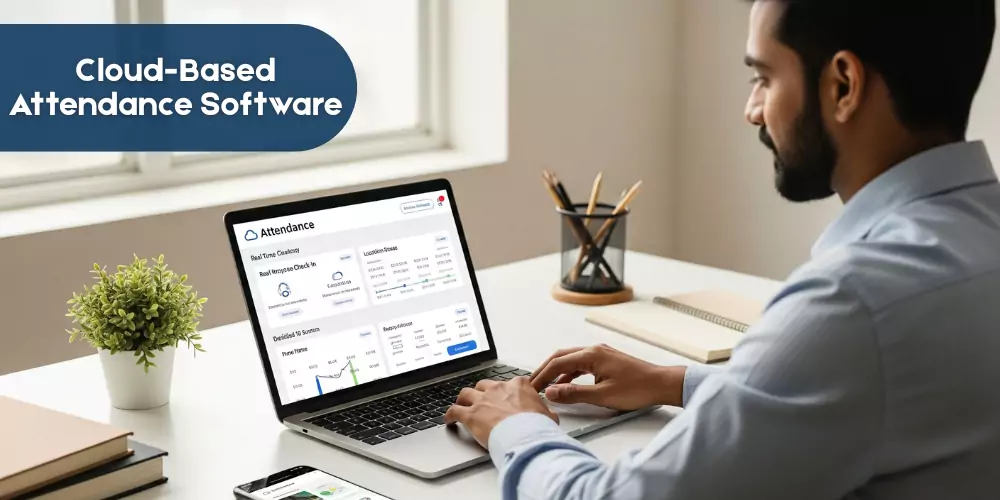
Instead of being tied to one device or location, attendance data lived in the cloud. That meant:
- HR could access it anytime, from anywhere
- Employees could check in using the web, kiosk, or app.
- Reports could be generated in seconds, not hours.
Everything started syncing—payroll, leave, shift planning, compliance—all connected through one platform.
You didn’t need to be in the office to be counted. You just needed access.
The best part? No more lost records. No more month-end rush. No more scrambling for timesheets during audits.
This wasn’t just a new tool—it was the start of smart HR.
Mobile Apps, Geofencing, and AI: Attendance Gets Smart
With the cloud in place, the next wave focused on mobility and intelligence.

Enter geofencing—a virtual boundary set around your workplace. Now, employees could only check in if they were physically on-site. Not in the parking lot. Not down the street. Right where they were supposed to be.
Then came mobile apps. Just a few taps, and employees could:
- Clock in and out
- Track their hours.
- Submit corrections or apply for leave.
- Get reminders if they forgot to punch In
Perfect for field staff, remote workers, or even multi-location teams.
And finally, AI joined the party.
- Spotting unusual patterns (like someone always showing up late on Fridays)
- Sending smart nudges to employees who forgot to check in
- Predicting future absenteeism so HR could plan ahead
These systems didn’t just track attendance—they learned from it. And that’s what made them powerful.

What’s Next: Predictive and Behavior-Based Attendance
So, where are we headed now?
We’re moving into a world where attendance isn’t just tracked—it’s predicted.
Today’s smart systems are beginning to:
- Analyze behavior to forecast absenteeism.
- Auto-regularize based on past patterns.
- Use wearables (such as smart badges or watches) to log presence without the need for a tap or scan.
Imagine a system that notices when an employee’s check-ins are slipping and sends a gentle reminder—or alerts HR before burnout happens.
Attendance software is no longer just reactive; it is now proactive. It’s proactive. And that changes everything.
Redefining the Future with HR HUB
As we look back at the journey—from dusty registers to smart dashboards—one thing is clear: attendance has evolved from a checklist item to a cornerstone of workforce strategy.
But evolution is only useful when paired with the right tool.
That’s where HR HUB comes in.
Our attendance management system goes beyond clock-ins and timesheets. It’s built for the modern, mobile, and flexible workforce. With:
- Cloud-based infrastructure for real-time sync across locations
- Mobile & geofence attendance for hybrid teams
- Smart dashboards and analytics for managers and HR
- AI-powered insights to detect trends before they become problems
Whether you're a small business or a growing enterprise, HR HUB empowers you to manage attendance intelligently, compliantly, and effortlessly.
Because attendance isn’t just about who showed up, it’s about building a workplace that’s present—mindfully, productively, and proactively.




